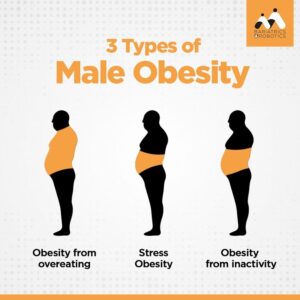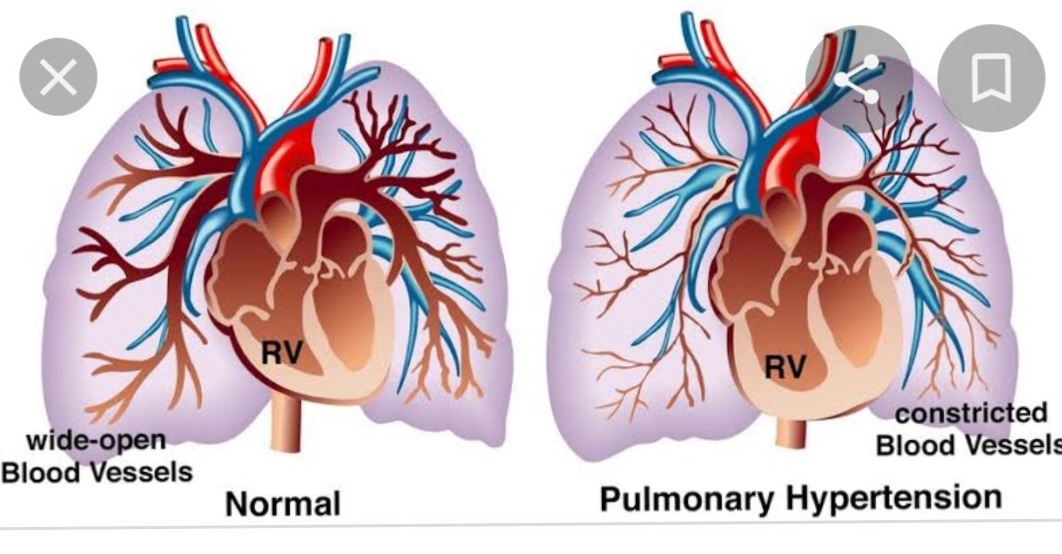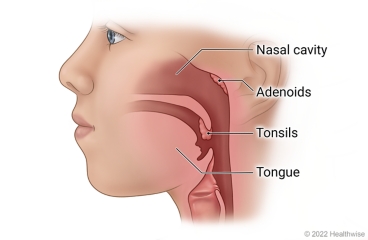How many types of obesity are there-various aspects-
Obesity is commonly categorized into three classes according to body mass index (BMI). These categories help assess the seriousness of obesity and the actions an individual can undertake to shed weight.
Obesity classes
Class 1: BMI of 30. 0 to 34. 9, deemed low-risk
Class 2: BMI of 35. 0 to 39. 9, labeled moderate-risk
Class 3: BMI of 40. 0 or higher, classified as high-risk
Obesity is linked to a higher likelihood of death, healthcare costs, and various health issues. The probability of these issues rises with the increase in the obesity class.
Other obesity classifications
Normal weight obese (NWO): A phenotype of individuals with obesity
Metabolically obese normal weight (MONW): A phenotype of individuals with obesity
Metabolically unhealthy obese (MUO): A phenotype of individuals with obesity
Nervous stomach obesity: A form of obesity that may re How many types of obesity are there? salt from consuming sugary foods in reaction to stress or anxiety.
Obesity is typically described as having a body mass index (BMI) that exceeds a certain threshold. A BMI of 30 or above is often used as a standard indicator of obesity in adults. A body mass index of 40 or greater is regarded as severely obese (previously referred to as “morbid obesity”), indicating the associated complications of obesity. Childhood obesity is assessed using growth charts. Various forms of obesity can be categorized based on their severity, appearance, and underlying causes. However, when discussing the types of obesity, it usually refers to the specific manifestation of obesity and the regions where fat is deposited.
What is obesity?
Obesity is a complicated and long-lasting condition with various causes that results in the buildup of excessive fat in the body and a decline in health. Certainly, having extra fat in itself is not a disease. However, when your body contains a significant amount of fat, its functions begin to alter. These alterations are gradual and may deteriorate over time, resulting in negative health consequences.
Types of obesity in terms of severity
Healthcare providers categorize obesity into three groups according to its severity and utilize BMI for this classification. It is important to point out that if an individual’s BMI falls between 25. 0 and 29. 9 kg/m2, they are categorized as “overweight,” meaning they are not viewed as “obese. ” There are three broad categories of obesity categorized by severity, for which the available treatments may differ. These three categories include:
Class I obesity: BMI 30 to


How is childhood obesity assessed?
Physicians also utilize BMI to determine obesity in children, but they evaluate it concerning the child’s age and gender. A child over the age of 2 is regarded as obese if their BMI exceeds 95% of their same-sex peers. Different growth charts are utilized for these assessments.
Types of obesity based on the location of fat accumulation
Generally, it can be stated that fat accumulation in the body occurs in the abdomen and hips. Although fat typically collects in the abdominal region in cases of obesity, some individuals may experience more pronounced accumulation; conversely, in certain others (typically women before menopause), fat tends to accumulate more in the hips and thighs. These two types of obesity are known as apple-shaped and pear-shaped obesity.
Pear-shaped obesity
This form of obesity refers to a greater buildup of fat in the lower body (thighs and hips) and is typically observed in women before menopause due to the influence of sex hormones. However, post-menopause, the obesity pattern for these women also shifts to apple-shaped, resembling that of men. In simpler terms, with hormonal changes, there is less fat deposition in the hips and thighs, while fat begins to accumulate in the abdominal region and around the internal organs. Certainly, this does not imply that women cannot develop apple-shaped obesity before menopause; it merely indicates that pear-shaped obesity is predominantly observed in women prior to menopause.
Apple-shaped obesity
Apple-shaped obesity represents a widespread form of obesity affecting both men and women (mainly after menopause). In this variant of obesity, fat is stored in the abdominal region and around the intestines, leading to an expansion of the midsection of the individual’s body. This enlargement of the midsection gives the body an apple-like silhouette, which is why this type of obesity is referred to as apple obesity.
Is apple-shaped or pear-shaped obesity more common?
As previously stated, a majority of obese individuals experience apple-shaped obesity, which is regarded as the most detrimental type of obesity concerning health implications. Research indicates that fat accumulation around the abdominal region is most closely linked to prior cardiovascular diseases and Type 2 diabetes. It releases substances into the bloodstream that trigger inflammation and disrupt the proper functioning of hormones. Therefore, among the two obesity types, apple-shaped obesity, being the more prevalent form, is associated with greater health-related issues.
Causes of obesity
Even though more than one factor usually contributes to obesity, it can generally be stated that the causes of obesity include the following:
Obesity caused by physical inactivity
This form of obesity arises from a lack of activity. Physical inactivity not only helps to create a positive energy balance and leads to obesity but is also linked to heightened levels of systemic inflammation. Physical inactivity happens when you refrain from moving your body for an extended duration, or in other terms, do not engage in exercise. This may involve activities such as sitting or reclining on the sofa watching television or remaining seated at a desk for lengthy intervals. The most effective approach to avoid this type of obesity is to maintain a physically active lifestyle.
Obesity resulting from excessive calorie intake
This kind of obesity is among the most prevalent types and is typically linked to overeating and lack of exercise. If you take in a significant amount of energy, particularly from fats and carbohydrates, but fail to expend it through exercise and physical activity, your body will retain a considerable amount of it as fat. The most effective approach for both preventing and treating this condition is to modify the diet and decrease daily food intake. Steering clear of sugar in the diet and engaging in at least 30 minutes of exercise each day can be beneficial. One treatment option for obesity due to high calorie intake is bariatric surgery.
Obesity resulting from genetic factors
Certain individuals have genetic traits that make them more likely to become obese. Numerous genes associated with obesity have been identified. Some of these genes lead to significant weight gain, while others influence the likelihood of becoming overweight and maintaining that weight. In cases of obesity linked to genetic factors, it is possible to observe a similar pattern of obesity in other family members. Depending on how the genes function, this type of obesity can become quite severe.
Conclusion
Obesity can be classified in various ways. The most common classifications of obesity focus on severity, fat distribution, and underlying causes. Body mass index is utilized to assess obesity.
What are the 4 types of obesity?
Four types of obesity have been identified, categorized by the composition and distribution of body fat: (1) normal weight obese; (2) metabolically obese normal weight; (3) metabolically healthy obese; and (4) metabolically unhealthy obese. Sarcopenic obesity has been defined, associated with all the identified phenotypes.
What are the 6 types of obesity?
Here’s what you should be aware of:
Obesity resulting from Diet: Consuming unhealthy food options and/or overeating while engaging in minimal physical activity can contribute to this type of obesity.
What is type 3 obesity?
An individual can be deemed to have class III obesity if they satisfy one of these criteria: Weigh 100 pounds more than the optimal body weight range for their gender and height. Possess a BMI of 40 or higher. Have a BMI of 35 or greater and are facing health issues related to obesity, such as hypertension or diabetes.
Sedentary Lifestyle Obesity:
Obesity is a medical illness defined by an excessive accumulation of body fat, which poses major health hazards. It is a complicated, persistent illness that can result in a variety of health issues, including diabetes, heart disease, and some malignancies. It is not merely a cosmetic issue.
Essential features of obesity:
Too Much Body Fat:
The Body Mass Index (BMI) can be used to determine obesity, which is characterized by excessive body fat.
BMI:
An individual is typically deemed obese if their BMI is 30 or higher.
Health dangers:
The risk of developing additional illnesses, such as heart disease, type 2 diabetes, high blood pressure, sleep apnea, and several malignancies, is increased by obesity.
Multifactorial:
Genetics, way of life, the environment, and other variables all contribute to the complexity of obesity.
Therapy:
Treatment methods may include medicine, surgery, and lifestyle adjustments (diet and exercise).
More specifically:
The clinical term for having an excessive amount of body fat that might be harmful to one’s health is obesity. BMI, where a score of 30 or higher is considered obese, is frequently used to make the diagnosis. Waist circumference and other indicators can also be used to determine fat distribution and health risk, but BMI is not the only factor.
Obesity can have serious repercussions, leading to a variety of health issues, such as cardiovascular disease, type 2 diabetes, and some malignancies. Obesity is a complicated issue that is impacted by a mix of genetic susceptibility, lifestyle variables, and environmental factors. It is not just a matter of personal preference.
Although lifestyle modifications like diet and physical activity are essential for controlling obesity, medical procedures like surgery or drugs may occasionally be required. People who are obese should seek individualized guidance and treatment plans from medical experts.
Obesity is a complicated condition that entails carrying excess body fat. Obesity is more than just a cosmetic problem. This medical issue raises the likelihood of several additional illnesses and health issues. These may include diabetes, high blood pressure, high cholesterol, liver illness, sleep apnea, heart disease, and some malignancies.
Some individuals have difficulty losing weight for a variety of reasons. Obesity is frequently the product of a combination of genetic, physiological, and environmental variables, along with dietary, physical activity, and exercise options.
The good news is that even slight weight reduction can help treat or prevent the health issues related to obesity. Weight loss can be achieved through lifestyle changes, more exercise, and a better diet. Weight reduction treatments and prescription drugs are additional methods for treating obesity.
Symptoms
Obesity is frequently determined using the body mass index, or BMI. Multiply weight in pounds by 703, divide by height in inches, and then divide by height in inches to get BMI. Or divide weight in kilograms by height in meters squared. There are many online tools that may be used to determine BMI.
A BMI of 23 or more may indicate an increased risk of health issues for Asians.
BMI offers a fair approximation of body fat for the majority of individuals. BMI, however, is not a direct measure of body fat. Although they don’t have extra body fat, some people, like physically fit sportsmen, may fall under the obesity BMI category.
To assist treatment decisions, many healthcare providers also take measurements around a patient’s waist. A waist circumference is the name of this measurement. Men with a waist circumference of more than 40 inches (102 cm) are more likely to have weight-related health issues. Women with a waist circumference greater than 35 inches (89 cm) are more likely to experience them. The proportion of body fat can also be measured to monitor progress throughout a weight reduction plan.
When to go to the doctor
Ask your doctor about obesity treatment if you are worried about your weight or weight-related health issues. You and your healthcare team can assess your health risks and talk about your weight reduction options.
Reason
Obesity results from consuming more calories than you burn through regular daily activities and exercise, even if body weight is influenced by genetic, behavioral, metabolic, and hormonal factors. These extra calories are stored as fat in your body.
In the United States, the majority of people consume too many calories, frequently from fast food and beverages with a high calorie content. Obese individuals may consume more calories before feeling full, experience hunger sooner, or consume more food as a result of stress or worry.
Due to the fact that many individuals in Western nations now have jobs that are far less physically demanding, they tend to burn fewer calories at work. Thanks to conveniences like remote controls, escalators, online shopping, and drive-through restaurants and banks, even everyday tasks require less energy.
The potential risk factors
Obesity is frequently caused by a combination of factors and contributing causes:
impacts and family legacy
The quantity and location of body fat storage may be influenced by the genes you inherit from your parents. Genetics may also influence the rate at which your body metabolizes food into energy, how well your body controls your appetite, and how many calories you burn during exercise.
Families often experience obesity. It’s not entirely due to the shared genes between them. Additionally, family members often have similar routines for eating and exercise.
decisions about one’s way of life
- An unhealthy diet. Weight gain is caused by a diet that is rich in calories, low in fruits and vegetables, full of junk food, and laden with high-calorie drinks and large portions.
- Calories in liquid form. Calories, especially those from alcohol, can be consumed by people in large quantities without experiencing fullness. Weight gain may also result from other high-calorie drinks, such as sugary soft drinks.
- Lack of action. You can easily consume more calories each day than you burn through routine daily activities and exercise if you have an inactive lifestyle. Using a computer, tablet, or phone is considered inactivity. Weight gain is strongly linked to the amount of time spent in front of a screen.
Some drugs and illnesses
Some individuals’ obesity may be attributed to a medical condition, such as hypothyroidism, Cushing syndrome, Prader-Willi syndrome, or another illness. Weight gain may also be caused by a decline in activity brought on by medical conditions like arthritis.
If you don’t make up for certain medications through diet or exercise, they may cause you to gain weight. These medications include steroids, several antidepressants, anti-seizure medications, diabetes treatments, antipsychotic medications, and some beta blockers.
Problems with society and the economy
Obesity is associated to socioeconomic factors. Without access to safe places to walk or workout, it’s difficult to stay healthy. Perhaps you were not taught how to cook in a way that is good for your health. Alternatively, you may not have access to more nutritious food. Your weight can also be impacted by the company you keep. If you have friends or family members who are obese, you are more likely to become obese yourself.
Age
Anyone, including little children, can become obese at any age. However, as you get older, hormonal changes and a less active lifestyle raise your risk of obesity. Additionally, as you get older, the amount of muscle in your body tends to decline. A reduction in metabolism is frequently brought about by less muscle mass. Additionally, these modifications lower calorie demands and may make it more difficult to avoid gaining extra weight. You will probably gain weight if you don’t make a conscious effort to manage your diet and become more physically active as you get older.
Other elements
- Pregnancy. Weight gain is frequent throughout pregnancy. It may be challenging for some women to lose this weight following the birth of the child. In women, this weight gain may aid in the progression of obesity.
- Giving up smoking. Weight gain is frequently linked to quitting smoking. And for some, the weight increase may be significant enough to be considered obesity. This frequently occurs when individuals use food to deal with the symptoms of nicotine withdrawal. However, quitting smoking is still generally better for your health than continuing to smoke. After stopping smoking, your healthcare team may assist you in avoiding weight gain.
- Insufficient sleep. Getting too little sleep or too much might alter hormone levels, which can raise hunger. You may also desire foods rich in carbohydrates and calories, which might lead to weight gain.
- Stress. Obesity can result from several external variables that have an impact on mood and general well-being. People tend to eat more calorie-dense food when under stress.
- Microbiome. Your dietary choices have an impact on the composition of your gut bacteria, which can lead to weight gain or difficulties with weight reduction.
You are not always going to be obese, even if you have one or more of these risk variables. Through diet, physical activity, and exercise, you may mitigate the majority of risk factors. Additionally, obesity can be treated with lifestyle modifications, drugs, and surgery.






